
One year ago, the first Texan was killed by COVID-19. 47,000 deaths followed — and it’s not over.
They were fathers, mothers, siblings, neighbors and friends, and in most cases their loved ones were not able to gather and mourn together.
The weight of their deaths fell unevenly across the state — the people who died were disproportionately Hispanic, and border towns with heavily Hispanic populations were among the hardest hit in the nation over the course of the year. Nursing home residents made up one in five deaths. And the virus mostly killed people 60 years or older in a state where the median age is 35.

Younger than 50
6.9%
50-59
10.9%
60-69
21.2%
70-79
26.8%
Older than 80
34.3%
Coronavirus
victims
Texans
69.9%
Younger than 50
11.7%
50-59
9.9%
60-69
5.7%
70-79
2.8%
Older than 80
Sources: Texas Department of State Health Services, U.S. Census Bureau
Credit: Carla Astudillo and Darla Cameron
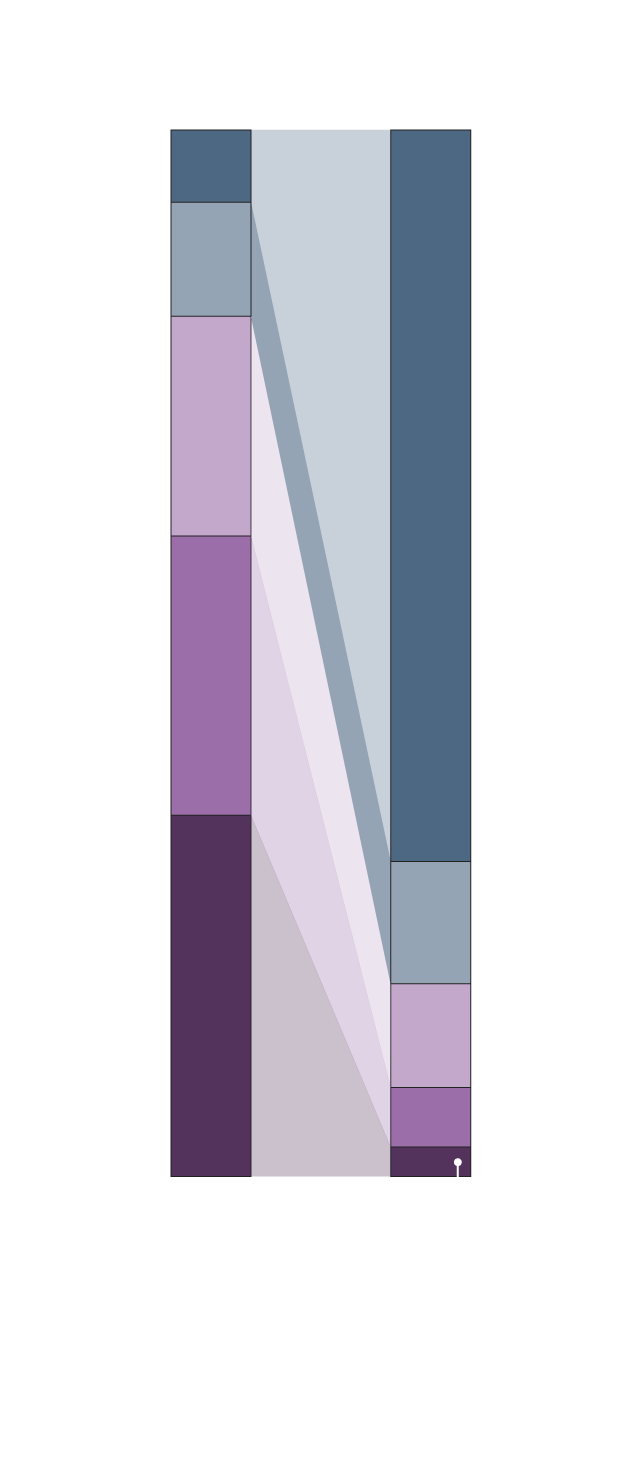
Coronavirus
victims
Texans
6.9%
Younger
than 50
10.9%
50-59
21.2%
60-69
69.9%
Younger
than 50
26.8%
70-79
11.7%
50-59
34.3%
Older
than 80
9.9%
60-69
5.7%
70-79
2.8%
Older
than 80
Sources: Texas Department of State Health
Services, U.S. Census Bureau
Credit: Carla Astudillo and Darla Cameron
Here’s how it happened, starting from the beginning.
This timeline tracks COVID-19’s rampage through Texas over the last year: the growing death toll, the policy decisions made in response to the pandemic that often influenced its course and the stories of some of the Texans claimed by the virus. The pressed flowers represent lives lost.

One death

20 deaths





100 deaths
March 2020
1 death

March 15
- A Matagorda County man in his late 90s was the first Texan to die with a confirmed case of coronavirus.
Week of March 16
Gov. Greg Abbott closed bars, restaurants and schools starting March 20, four days after some Texas cities had ordered widespread closures.
The day that Abbott ordered the shutdowns, the state reported that three people had died with COVID-19. More deaths were reported as health officials processed death certificates in the weeks that followed.
Week of March 23
Giving voice to a growing backlash against COVID-19 restrictions, Lt. Gov. Dan Patrick said he would rather perish from COVID-19 than see the economy destroyed.
By the end of this week, 69 people had died.
Week of March 30
Abbott told Texans to stay home as cases rose.
The state originally reported 41 total deaths as of March 31. The count would surpass 200 by the end of the week, as death certificates were processed.

March 31
- Phillip Perry, 49, a beloved Waco middle school principal, died of coronavirus.

April 7
- Bartolo Infante, 72, was the first Texas prisoner to die of coronavirus.
Week of April 6
The impacts of coronavirus on Texans of color were clouded by incomplete data.
By Easter, 420 people had died in Texas. Many churches and other places of worship remained closed, and large gatherings were prohibited. Thousands of lilies, a traditional funeral flower, withered in an East Texas greenhouse.
Week of April 27
In the Texas Panhandle, meatpacking workers had little power to avoid the coronavirus.
The state reported a then-record 50 new coronavirus deaths the day before Abbott allowed some businesses to reopen at 25% of capacity on May 1.
Week of May 4
Coronavirus restrictions altered funeral plans, leaving some Texans to grieve alone.
Texas reported its 1000th fatality on May 8, but this early total was an undercount — 1,266 had actually died as of that day.
Week of May 11
At least 585 residents from nursing homes and assisted living facilities had died.

May 23
- Construction worker Valentin Quiroz, 52, died, leaving his wife with over $25,000 in out-of-pocket medical and funeral expenses.
Week of June 1
As cases and hospitalizations stayed stable in the first few months, Abbott allowed bars to open at 50% capacity.
Three weeks later, the governor said he came to regret that decision.
Week of June 8
Inmates reported dangerous practices inside the Texas prison with the most coronavirus deaths.
The Wynne Unit in Huntsville had at least 10 coronavirus deaths at the time.

June 11
- James Allen Smith was supposed to be in prison less than a year. Instead, he died after catching the coronavirus.
Week of June 22
With coronavirus cases spiking, Abbott ordered Texas bars to close again and restaurants to reduce to 50% occupancy.

June 22
- Felipa Medellín, 54, died in her Houston home as her daughter attempted CPR.
Week of June 29
Abbott issued a statewide mask mandate.
The number of deaths each day would surpass 100 for the first time this week .
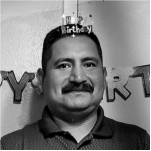
July 3
- Benito Onofre, 44, was found dead at home after suffering from an untreated case of COVID-19.
Week of July 20
“Last responders” worked around the clock picking up bodies as coronavirus deaths surged in the Rio Grande Valley.

July 25
- South Texas chaplain Adolfo Alvarado Jr. prayed with his hospice patients as the pandemic intensified. Then he caught COVID-19.
Week of July 27
Texas' coronavirus death count jumped 8% after officials changed the way they tally COVID-19 fatalities.
The new data also confirmed what many had seen during the pandemic’s first months: The coronavirus is deadlier for people of color.
Week of Aug. 3
A coronavirus outbreak at a Houston-area nursing home killed 17 residents.
At this point, over one-third of the state's deaths had been nursing home residents.
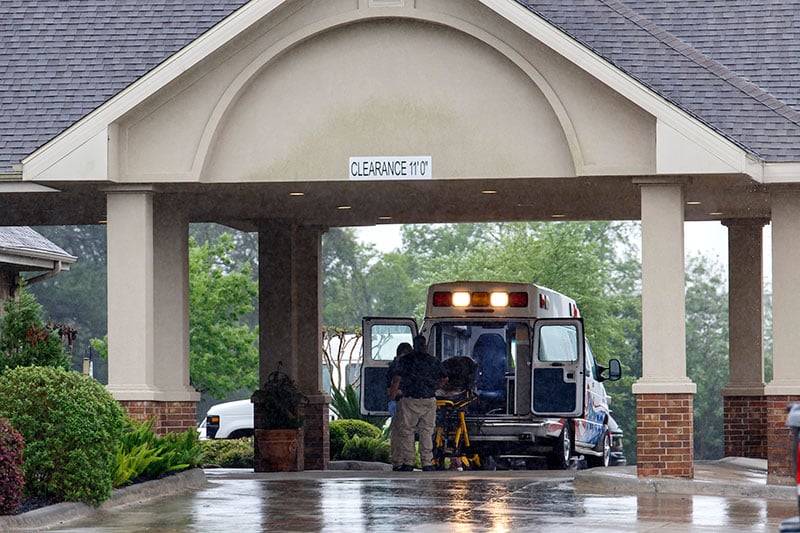
Michael Stravato for The Texas Tribune
Week of Aug. 17
Texas became the fourth state to report 10,000 COVID-19 deaths.
The actual toll at this point was more than 13,000. The number rose as more death certificates were processed.
Week of Aug. 31
The first wave ebbs in Texas: For the first time since late June, fewer than 100 people died per day on average the week before Labor Day.
Week of Sept. 21
With cases and deaths dropping, Abbott loosened restrictions for restaurants and other businesses in most of the state.
Ross Ramsey’s analysis: We’ve lost a lot of Texans already and will surely lose more to the coronavirus. Doesn’t it seem like there should at least be a moment of silence?
Week of Sept. 28
On average, fewer than 60 Texans died of coronavirus each day this week, the lowest rate since June — and the lowest it has been since.
Week of Oct. 12
Abbott allowed bars to reopen in regions of the state with lower hospitalization rates.
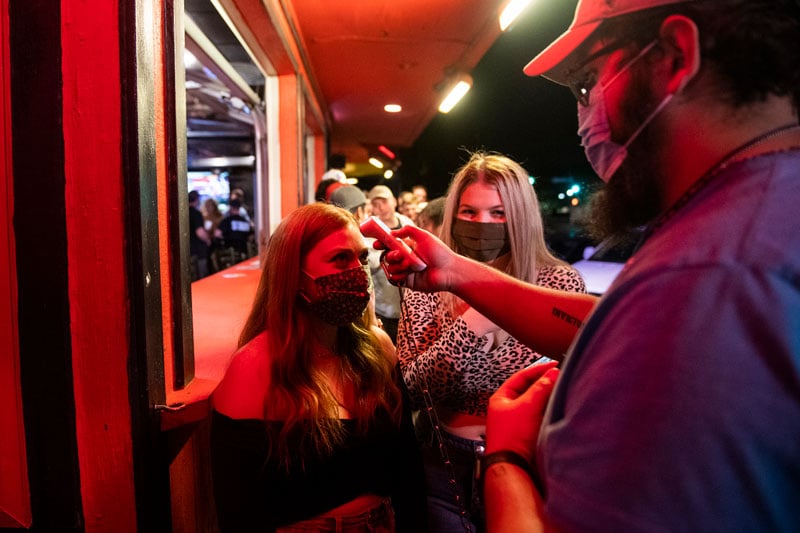
Justin Rex for The Texas Tribune
Week of Oct. 26
More than 100 Texans died every day this week.
Cases, deaths and hospitalizations rose as the second wave began in October and November.
Pandemic fatigue increased in places like Lubbock.

Nov. 3
- Dr. Juan Fitz, a 67-year-old emergency room doctor, died in Lubbock. He was one of thousands of health care workers infected with COVID-19.

Nov. 8
- Raymond Reeves, a Texas Panhandle farmer and rancher, died at age 91.
Week of Nov. 9
Funeral homes and hospitals in El Paso and West Texas braced for a new wave of coronavirus infections and deaths.
The number of coronavirus patients in Texas hospitals had nearly doubled since October.
Week of Nov. 16
With the state’s COVID-19 death toll surging again, Abbott announced that he would not order a statewide lockdown.
El Paso faced state resistance as local officials desperately tried to keep up with a massive COVID-19 spike and the county used inmates to staff mobile morgues.
The devastating toll of COVID-19 on El Paso illustrates the pandemic’s stark inequalities.
Week of Nov. 23
For families who lost loved ones to the pandemic, Thanksgiving carried an extra weight this year.
“I dread the things that will come up for me and the amount of effort it's going to take to rise above the grief and the fear and the anger about this happening to our country and the world,” said one relative of a person who died.
Week of Dec. 7
From mid-December to early February, more than 200 Texans died each day on average.
Nine months on the pandemic’s front line have crushed Texas health care workers’ spirits and killed their colleagues.
Week of Dec. 14
As deaths mounted in El Paso, the pandemic robbed some mourners of traditional funerals.
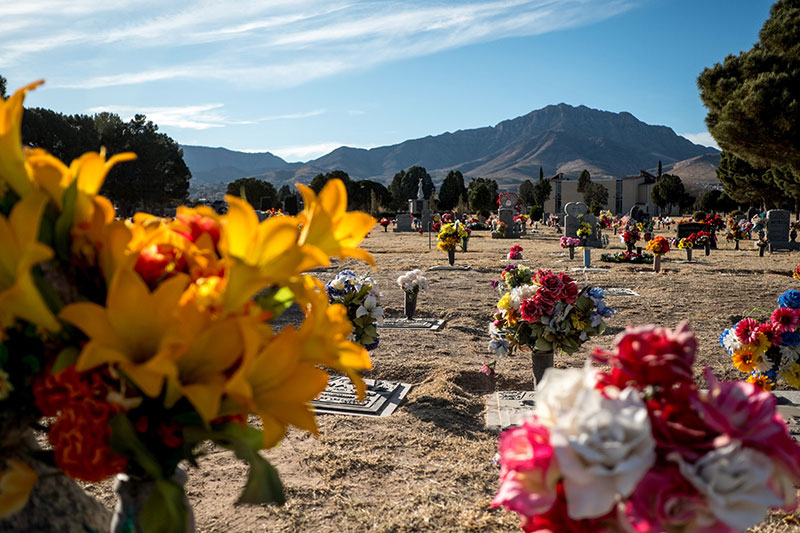
Joel Angel Juárez for The Texas Tribune
Week of Dec. 21
Abbott allowed only limited COVID-19 restrictions for Texas' worst hot spots. Local leaders said it wasn’t enough.
A Texas Tribune analysis showed that in regions with the worst outbreaks, including El Paso, Amarillo and Lubbock, the restrictions did little to ease an overburdened health care system.
Week of Jan. 4
Already in crisis, Texas hospitals treated record numbers of COVID-19 patients while preparing for another post-holiday surge.
For an 18-day stretch in January, more than 300 Texans died every day — a total of around 6,000 lives lost.
Week of Jan. 11
The state's health department issued a dire warning after Texas reported over 400 new COVID-19 deaths for the third straight day.
“Every life lost impacts countless more. These are our loved ones, neighbors, fellow Texa[n]s. Not statistics,” the agency said in a tweet.
Week of Jan. 18
After the post-holiday peak, which was the state’s worst, the number of reported deaths began to fall.
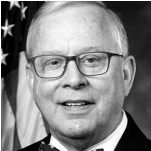
Feb. 8
- U.S. Rep. Ron Wright died weeks after testing positive for coronavirus. He had been living with cancer for years.
Week of Feb. 8
Just three months after reporting 20,000 deaths, Texas recorded its 40,000th death due to coronavirus on Feb. 12.
After more death certificates were processed, the number surpassed 43,000.
Meanwhile, the number of reported deaths continued to fall, with the daily average dropping to fewer than 200 per day for the first time since early December.
Week of March 1
With cases, deaths and hospitalizations dropping, Abbott announced the end of the statewide mask mandate and capacity limits on businesses.
For some Texans who lost loved ones to the coronavirus, lifting the mask mandate is a “slap in the face.”
Week of March 8
Statewide mask mandate and business capacity restrictions ended March 10.
The number of deaths reported each day has continued to decline.
Because this data is based on death certificates, which can take time to complete and report, this number could still be an undercount.
47,468 Texans died due to coronavirus from March 15, 2020 to March 14, 2021.
This total only accounts for people whose death certificates say COVID-19 was the cause of death. And while vaccination efforts are gaining momentum — nearly 10% of Texas residents were fully vaccinated as of March 13 — the pandemic is far from over. More than 150 new deaths on average are still being reported in Texas each day.
See the latest statistics, which are updated daily, in the Texas Tribune’s coronavirus case tracker.